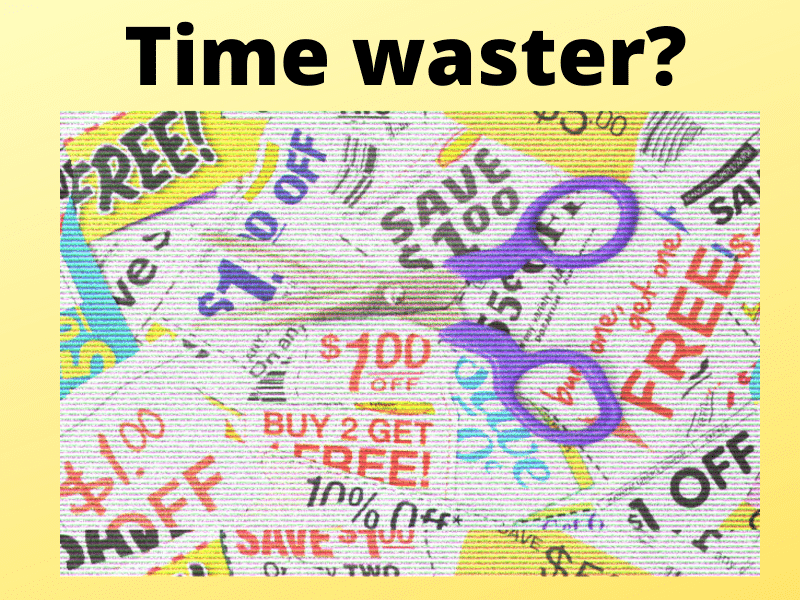This post was last updated on July 13th, 2022 at 09:46 am
In researching other blogs as I prepared to launch my own site, I encountered debates on the wisdom of so-called extreme couponing.
Coupons save money, but they also take time to find. With extreme couponing, you run the risk of misappropriating your time. You could save a lot of money, but if you spend hours searching for coupons, is it worth it?
Robert Farrington at thecollegeinvestor.com offers this equation to determine whether coupon clipping makes sense:
“If Money Saved < Potential Money Earned = Don’t Be Frugal
If Money Saved > Potential Money Earned = Be Frugal”
As he notes, the answer is going to be different for everyone. But for a lot of people, spending many hours searching for coupons is a poor use of time. It might be a better use of your time to earn more money than saving it.
I’ve found the best use of my time for saving money on purchases is to focus on redeeming rebates.
Rebates are like coupons except they work in reverse. With the coupon, the buyer gets an up-front discount, while the seller bears the cost. With a rebate, the buyer must wait until after purchasing the product to redeem the discount.
For a rebate to be worthwhile, the dollar amount must be high enough to justify the time, effort and expense of redemption. The seller is counting on a portion of people who buy the product to either forget or decide not to seek the rebate. Because it takes more work for the buyer to redeem a rebate, a seller typically can afford to offer a larger rebate than coupon discount. This dynamic rewards the patient, strategic shopper.
Some downsides to rebates
Even if redeeming a rebate makes financial sense, rebates come with some downsides. For one, you’ll need to disclose more information than you would with a coupon, namely your name and address. You might have to wait several weeks to receive the money.
You’ll also have to bear the risk of the seller failing to honor the rebate terms, though this rarely happens in my experience. (Many retailers and manufacturers allow you to track the status of your rebate online.)
All sorts of products have rebates
Assuming you’re willing to accept the rebate risks, your job as a “rebater” is to monitor stores and companies for rebates. To save time, narrow your search to only products you use regularly.
There are large rebates to be had for everything from motor oil to garbage bags. For example, I only buy paint around Memorial Day or Labor Day when Home Depot offers a $10 per gallon rebate on certain brands. A couple months ago, I received a $130 rebate on a year’s supply of contact lenses. For outdoor and sporting equipment, I often buy from REI. It’s a member-owned cooperative and offers a 10% annual dividend on qualifying purchases, which acts like a rebate.
I stock up on dishwasher soap, facial tissues, sandwich bags and other products when Menards offers a 25% rebate on Procter & Gamble or Clorox products. The more you stock up on these products, the more worthwhile the rebate becomes. A key to being a successful “rebater” is to time your purchases around lucrative rebates (see my post about shopping Menards).
‘Rebaters’ need to be organized
You also need to be organized and have a system to ensure your rebate forms and receipts don’t fall to the bottom of some random pile on your kitchen countertop, never to be seen again. With rebates, the seller benefits when you, the buyer, forget about the offer. When you remember, you’re reaping the reward of everyone else’s forgetfulness.
By staying focused, you can save hundreds of dollars each year with minimal time investment. You can make Mr. Farrington’s money-saving equation work in your favor with rebates. Do you have a favorite rebate you like claim? Let us know in the comments below.

